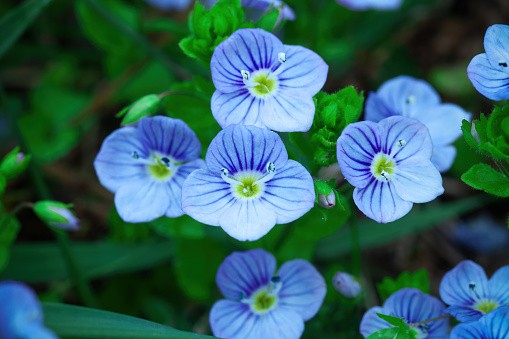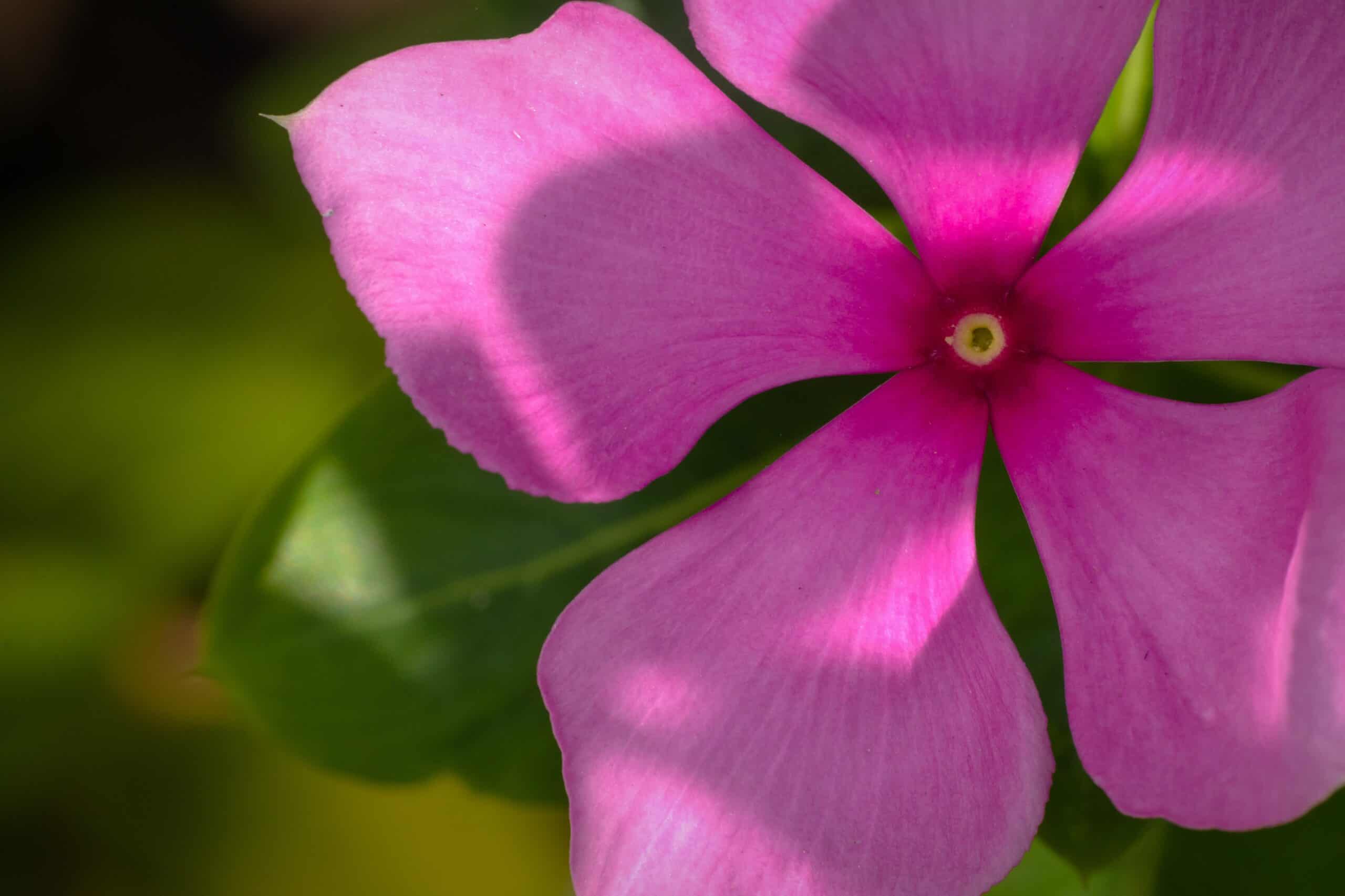Speedwell is a member of the Veronica Longifolia species. It is also known as Long-Leaved Speedwell and is a favorite amongst travelers and gardeners alike for its abundance and beautiful blooms, making it one of the most popular flowers for home gardens. Veronica Longifolia, or Speedwell, are easy-care and long-blooming perennials that can reach heights of up to four feet, offering a vertical and distinctive border to add to any garden. This attractive and low-maintenance flower comes in a variety of colors, from white and pink to blue, violet, and purple.
Family
Veronica Longifolia is part of the Plantaginaceae family. This family of plants is often referred to as the Plantagineae, and includes many other plants and shrubs, such as the plantain, foxgloves, and white borders.
Plant Type
Speedwell is a perennial flower. Perennials are plants that live for more than two years, continue to grow and bloom in the spring, and then die in winter. They come back the following year, growing the same foliage and flowers once again.
Mature Size
Speedwell grows to be about four feet tall, although it can grow smaller or larger depending on the variety. It spreads wide when previously shaped and pruned around.
Sun Exposure
Speedwell enjoys full sun when planted outdoors. When grown indoors, it is still advisable to keep these flowers in a brightly lit area. Full sun for at least six hours each day is preferred for the best result.
Soil Type
Veronica Longifolia prefers well-drained, nutrient-rich soil. If planting in flower beds, ensure the soil is already prepped with adequate amounts of organic matter. To provide enough nutrition, use a water-soluble fertilizer every four to six weeks.
Soil pH
Speedwell prefers alkaline soil with a pH level between 5.5 and 7.5. If the soil pH is too low or too high, it may affect the nutrient absorption and flower growth as a whole.
Bloom Time
Speedwell blooms in late spring and continues flowering until late summer. Some varieties will even bloom longer, up to the beginning of fall.
Flower Color
The flowers of Speedwell come in white, pink, blue, violet, and even purple depending on the variety. The centers of each flower are often much darker than its petals, making them look like small jewels.
Hardiness Zones
Speedwell can be grown in USDA plant hardiness zones 4 through 10. Make sure to keep these flowers in temperatures between 50 and 70 degrees Fahrenheit.
Native Area
Veronica Longifolia is native to much of Europe, North Africa, and some parts of temperate Asia. It is popular in many parts of the world for its aesthetic looks and easy-care nature.
How to Plant
When choosing the area for Speedwell, it is best to opt for direct sun and well-drained soil. This flower is drought-tolerant and can thrive in soils that are slightly dry, but an adequate and consistent water supply will be the key to help them reach their full potential.
Veronica Longifolia can be sown directly outdoors or planted in containers and placed indoors. For outdoor planting, ensure the soil is amended with an adequate amount of organic matter as these flowers like nutrient-rich soil. Before planting, steep one tablespoon of fertilizer per five gallons of water, and water the soil with it.
Indoor planting requires similar conditions to outdoor planting and the same amount of water. However, containers don’t have the ability to retain moisture as much, so a water-soluble fertilizer has to be applied every four weeks to ensure enough nutrition.
Meaning and Symbolism
The blooms of Speedwell attract many admirers, although its beauty and symbolism remain lesser-known. The name Speedwell refers to this flower’s speedy growth. Its genus name – Veronica, according to Christian and Latin mythology – derives from Saint Veronica, who offered Jesus Christ a cloth when he was on his way to his Crucifixion.
Since antiquity, Speedwell has symbolized swiftness, sincerity, and confidence. Some also see the Speedwell blossom as a symbol of faith, loyalty, and the recognition of true friendship and mutual understanding.
History, Mythology, and Religious Significance
Speedwell has been around for a long time and has had many uses and cultural implications in the past. According to medieval texts, Veronica Longifolia was used to protect from witches spells. In the 19th century, Speedwell was used in medicine and was believed to bring good luck.
In Norse mythology, Odin was believed to be associated with Speedwell, and the flower was commonly used to represent good luck and fast travel. In Christian mythology, Saint Veronica gave Jesus Christ a cloth when he was on the way to his crucifixion, which is why this flower’s genus is called Veronica. Today, many churches associate the Speedwell flower with humility and service.
Flower Varieties and their Defining Characteristics
Speedwell comes in a variety of colors and shapes and is a popular choice for gardeners and flower admirers. Some of the most popular varieties of this flower include Giant Hybrids, the Spiked Speedwell, and the Alba Hybrids.
Giant Hybrids – Giant Hybrids are known for their larger tomato-red or purple-blue flowers and broad, bright green leaves. Growing from four to five feet tall, this Speedwell variant is an eye-catching and stunning flower for any garden.
Spiked Speedwell – As its name implies, this variety of Speedwell has very spikey foliage. Its flowers come in a range of colors, from pink to purple and blue and it is known to bloom more than once throughout its season. The stems can stretch up to four feet, making it an attractive choice for a living fence.
Alba Hybrids – The Alba Hybrids are known for their bright white flowers and glossy-green leaves. Growing up to three feet, these Speedwell variants are a perfect choice for pots and container gardens. With its striking white blossoms, it is a sure hit for a wedding bouquet.
How to Pot and Repot
When potting Speedwell, first decide whether to pot it indoors or outdoors and make sure the container is spacious enough for the flower to spread and grow. Fill in the pot with soil that is rich in nutrients and provides good water drainage.
When repotting Speedwell, use soft, loamy soil with coir potting mix or peat moss. Ensure the soil is damp, but not too wet, before planting and make sure the container has proper drainage. Potless Speedwell will scratch easily and may damage the root system if handled wrong. When repotting, be very careful not to uproot any of the root systems.
How to Prune
Speedwell doesn’t require a lot of pruning or trimming, as it grows fairly naturally. When it does need to be shaped, a light pruning is enough for this flower. Varieties with thicker and tighter foliage may need light shaping to get rid of overgrown and old branches.
When pruning Speedwell, make sure to use sharp and sterilized shears. Always cut the flower just above the nodes and never prune more than 25% of the bush. Light pruning can be performed during its flowering season, as it will not harm the bloom and will actually help stimulate flowering. Additionally, all pruned branches should be removed, as they can become breeding grounds for pests.
How to Propagate
Speedwell can be propagated through the use of stem cuttings or division. For stem cuttings, select healthy, disease and pest-free stems, and use at least 6 to 10 inches in length. Once the stem cutting is prepared, dip it in a growing hormone and place it into a potting mixture of sphagnum peat moss. Make sure to keep the soil evenly moist throughout the rooting period to ensure successful propagation.
To propagate Speedwell through division, carefully remove the entire plant from the soil and separate the stems using a sharp knife or pruners. If planting directly into the soil, make sure to water them properly and provide them with a nutrient-rich soil. For better results, the clumps from division can be planted in larger, more spacious containers.
Common Pests and Diseases
Speedwell is not immune to pests and plant diseases. It is important to check the plant occasionally for any signs of pests and diseases. The most common pests are aphids, mites, thrips, and slugs. The plants can also be affected by a common fungus called powdery mildew, which affects their growth.
To protect Speedwell from pests and diseases, use an insecticidal soap and spray it onto the leaves. To prevent powdery mildew, keep the foliage dry and leave enough space between the plants to ensure ventilation. Also, provide them with an adequate amount of water, without making the soil soggy.
Frequently Asked Questions About Veronica Longifolia
- Q: How do I prevent Speedwell from being infected by diseases?
A: To prevent Speedwell from diseases, provide them with an adequate amount of water, without making the soil soggy. Make sure the plant is not overcrowded and leave enough space between them for ventilation. In addition, an insecticidal soap can also help protect the plant from pests and diseases. - Q: Can Speedwell be grown indoors?
A: Generally, yes! Speedwell can be grown in containers both indoors and outdoors. When choosing a potting container, make sure it has enough space for the roots and is placed in an area with ample sunlight. Though Speedwell is drought-resistant, it’s still important to provide enough water. - Q: Is Speedwell a perennial or an annual?
A: Speedwell is a perennial flower. Perennials are plants that live for more than two years, continue to grow and bloom in the spring, and then die in winter. They come back the following year, growing the same foliage and flowers once again.
Veronica Longifolia Fact Sheet
| Attribute | Data |
|---|---|
| Speedwell | Veronica Longifolia |
| Family | Plantaginaceae |
| Type | Perennial |
| Mature Size | 4 feet tall |
| Sun Exposure | Full Sun |
| Soil Type | Well-drained, nutrient-rich |
| Soil pH | 5.5 to 7.5 |
| Bloom Time | Late spring to late summer |
| Flower Color | White, pink, blue, violet, and purple |
| Hardiness Zones | 4 to 10 |
| Native Area | Europe, North Africa, and temperate Asia |
What we love from Amazon this week
Buy these wonderful flowers directly from Amazon:















